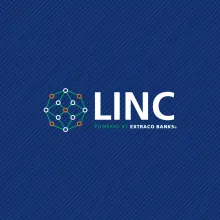
Cash coming into your business and the actual profit you make are two very different things, and almost always never total up as identical amounts.
The difference?
Cash flow is simply the cash that comes in and out of your business each day. Money in, money out.
Profit is what the IRS uses to calculate the tax you owe from your end of year accounts from business operations, which is calculated by adding revenue and subtracting all expenses, leaving a profit balance.
Why cash flow and profit can differ
The critical difference is the way certain financial data is treated inside the profit and loss account, as it records only what happens in the financial year. Some things either don’t get counted or are diluted as a result.
Let’s take an example: you have sales of $500,000 with running costs of $360,000 during the year, and you buy a $140,000 piece of machinery. As far as you are concerned you’ve made zero ‘profit’ ($500,000 sales less $360,000 expenses less $140,000 machinery).
But that’s CASHFLOW, not PROFIT.
The problem?
In a profit and loss, you only add in the depreciated value of the asset as an expense (rather than claim the whole amount). For example, if depreciation is 10%, you’d only claim $14,000 ($140,000 times 10%) for the year, not $140,000.
The profit you’d report to the IRS in this example would be $126,000 ($500,000 less $360,000 expenses less $14,000 depreciation), even though you have zero in the bank.
Other common causes of differences between cash flow and net profit include:
Purchase of inventory
You can only count inventory or raw materials that is ‘used up’ during the year as an expense. For example, let’s say you start with $100,000 of inventory on day one of the financial year, buy $200,000 worth over the year, and at the end of the period have $180,000 left. You can’t claim all the $200,000 of inventory as an expense. The calculation is $100,000 + $200,000 less the $180,000 remaining, which equals $120,000.
Watch out for buying large amounts of inventory (often suppliers have sales and offer good deals) at the end of the year which will reduce your cash reserve but not move the dial on profit.
Late payers
If you bill out a job for $50,000 which remains unpaid at the end of your financial year, the $50,000 gets added to sales (and so counts toward your profit number), but the cash hasn’t hit your account.
Pre-paid expenses
If you pay in full for anything like accounting services or insurance that crosses over your financial year, you’ll only claim the portion used up. For example, if you pay insurance of $10,000 to cover 12 months, but your financial year ends 6 months after you’ve paid, you’ll only be able to claim $5,000 in the current year as an expense (while the whole $10,000 has exited your account).
The reverse works as well. If you’ve pre-paid, then the following year you can claim the remainder as an expense, but the cash flow stays untouched. You win.
Other actions that lower cash flow
There are lots of reasons why cash doesn’t equate to profit, such as:
- Excessive withdrawals by the owner. If you draw funds from the business, it’s not usually counted as an expense (as it’s often tagged to your current account). You’re better to pay yourself a higher salary which is included. Seek financial tax advice if this is causing you problems.
- Taking on too much business too quickly, and then a large customer doesn’t pay, or delays their payment while you still have overhead to cover. This can be a major issue, as the sale is counted towards your profit figure, but the cash has failed to arrive.
- Purchasing too much inventory relative to sales, where over time your inventory levels slowly creep up, possibly causing issues with obsolescence.
- Taking on more loans than the business can service, as loan principal repayments are not included as an expense (the interest is).
How to avoid an end of year surprise
To better balance the difference between cash flow and profit then consider:
- Plan to purchase new assets at the start of your financial year, not the end.
- Only spend cash on capital items if you have enough reserves in place to not stress the cash flow of the business.
- Unless it’s a great bargain and you have the cash, don’t buy large amounts of inventory at the end of the year (even if they’re heavily discounted).
- Pay for large ticket items over time to keep your cash reserve intact. Sometimes it’s better to borrow to fund capital items, even though it may cost more in the long-run.
- Ask suppliers if you can buy inventory on consignment (pay for it when you sell it). You never know, they may agree.
- Lease don’t buy assets if they’re not used all the time. Yes it’ll be a little more expensive, but if you’re only going to use a piece of machinery a few times a year, question if you need it sitting around idle for the remainder.
- Identify virtual warehousing or being able to integrate your inventory needs online, so you only buy what you need, when you need it, rather than stockpiling.
Remember to plan for the dates when your business’s taxes are due. A large tax bill is difficult to pay if you haven’t planned in advance for it, especially if it arrives at a time when your cash reserves are low.
Looking for more resources?
Extraco LINC has various resources to help business owners overcome hurdles and take advantage of growth opportunities.


